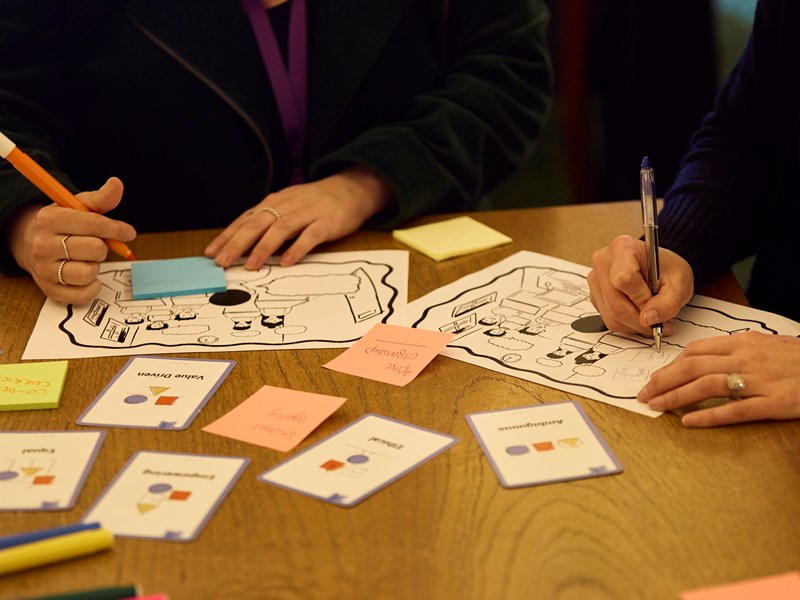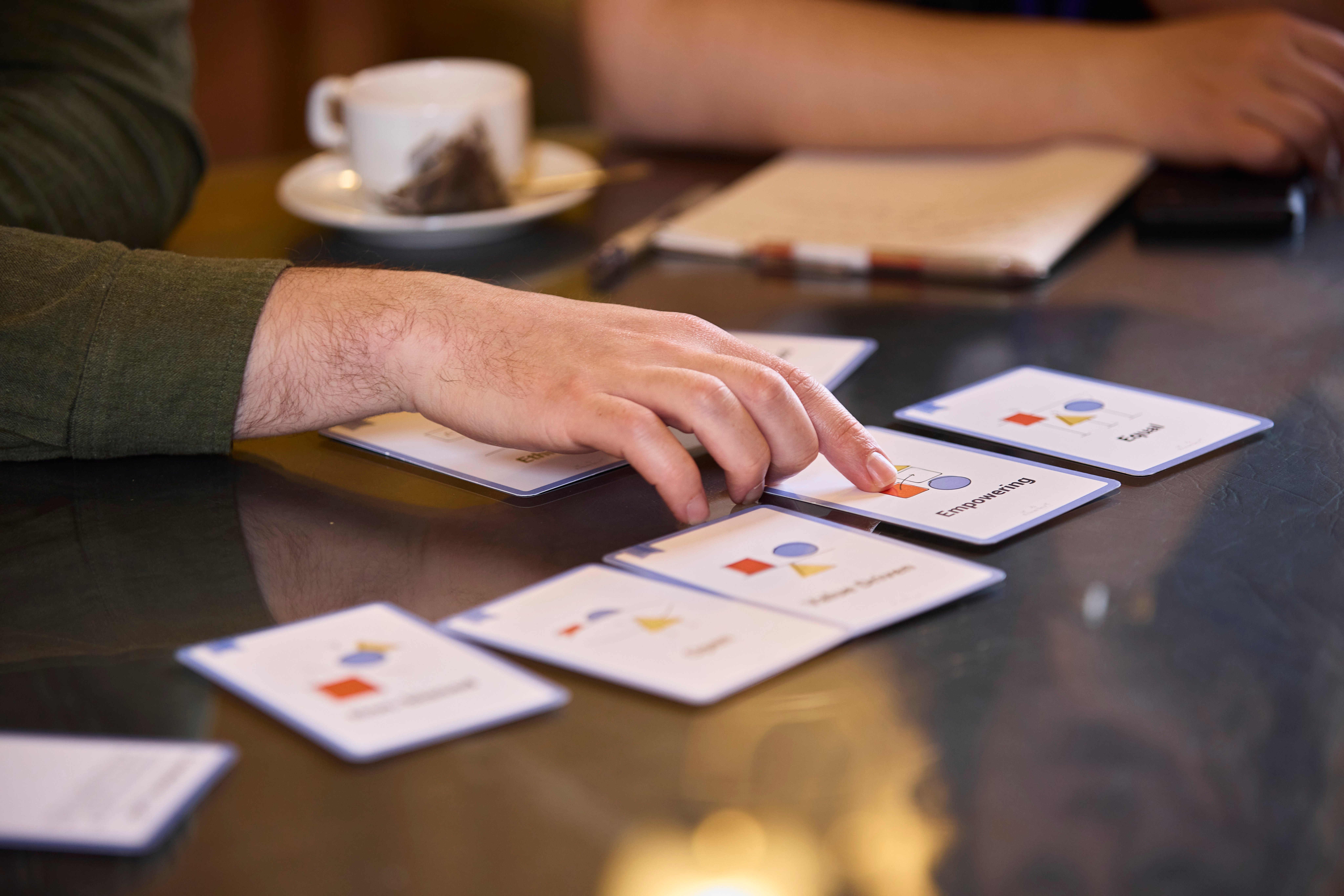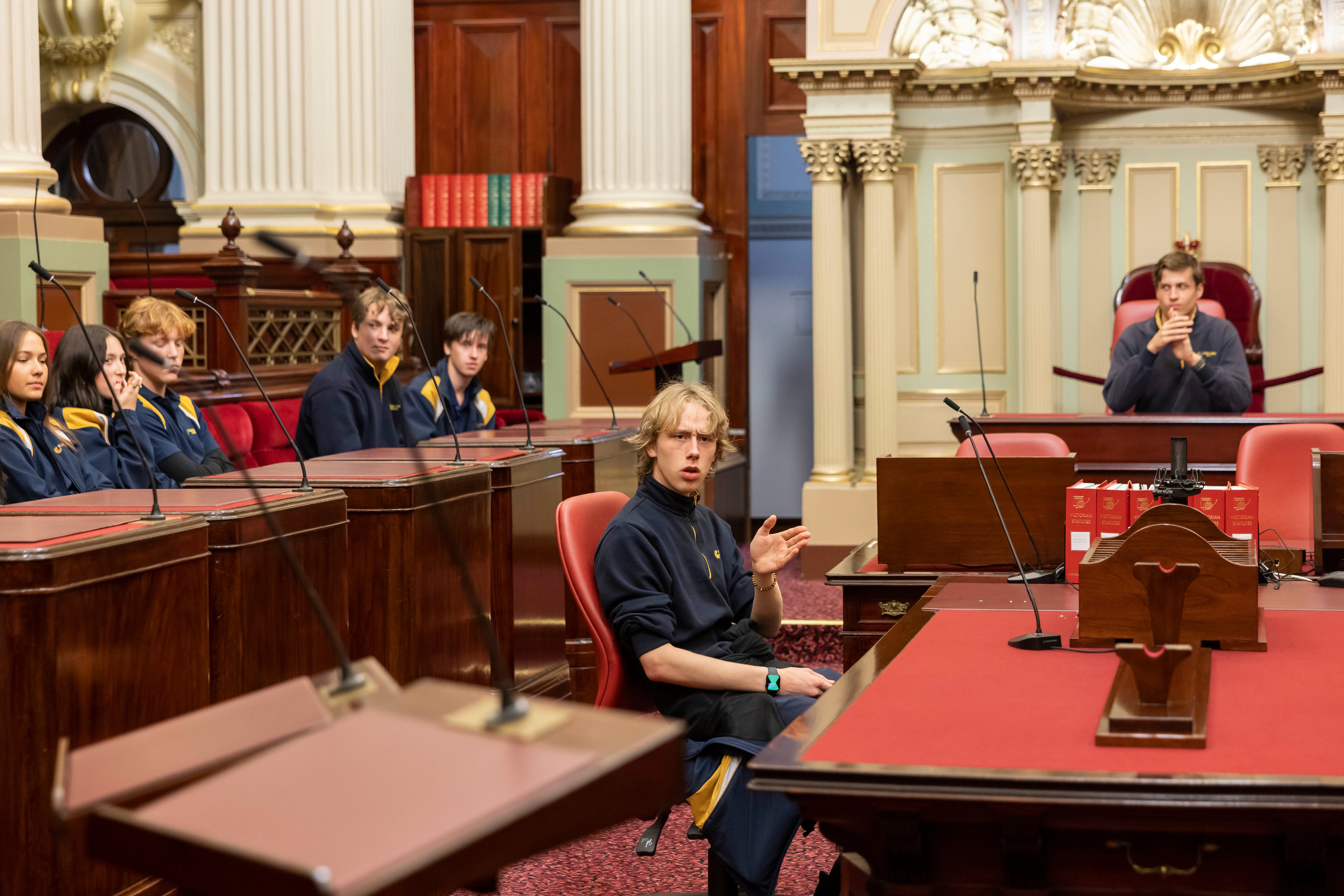Civics and citizenship in a contemporary society
21 August 2024

Teachers from across Victoria attended a conference on teaching civics and citizenship in a contemporary society, exploring the new civics and citizenship curriculum, as well as strategies for the classroom.
On Friday 16 August, teachers from across the Victorian education sector came to Parliament House for our first in-person conference; Civics and citizenship in a contemporary society. The conference focused on the implementation of the updated version of the civics and citizenship Victorian Curriculum, how to teach contemporary issues, engaging students in active citizenship, and understanding of civics processes.
After a welcome from The Speaker of the Legislative Assembly, teachers started the day by hearing from the VCAA Curriculum Manager, Civics and History, Adam Brodie-McKenzie, about the design and functions of the new curriculum. Adam highlighted the importance of the new skills that have been built into the curriculum, which is scheduled for implementation in 2026, along with the importance of discussing contemporary issues and engaging with real world case studies in the classroom.
Teachers used our Action and Influence teacher guide to explore ways they can plan for active citizenship, use hypothetical scenarios in the classroom to explore the concept of active citizenship; it is not always possible for students to be out in the community engaging in active citizenship (for example, school location and/or timetable constraints). The new curriculum highlights the importance of active citizenship and for students to understand the different reasons for being and ways to be involved with their community. In the hypothetical scenarios included in the resource, students are asked to consider the type of action that might be most effective to raise awareness of their issue, along with the scale, pace and direction of their chosen action.
Contemporary issues and co-design
Two of the other sessions included a discussion on contemporary issues and a workshop on co-design strategies for the classrrom.
While there was a dedicated time to exploring how to teach contemporary issues in the classroom, it was also a theme across the day. Some of the challenges included lack of confidence in facilitating these discussions to the complexity and uncertainty around the issues themselves. One of the key takeaways was that it is important to work with your students to determine what they think a contemporary issue is, as this will vary depending on school location, context and student interests. Once the issue has been chosen, it's important to work with your students to develop their inquiry and analysis skills so they can explore the issue through a fact-based approach.
Our Guide to challenging conversations resource includes a range of strategies to help you navigate and discuss contemporary issues.
We were also really lucky to have a co-design workshop, led by Professor Sonja Pedell, Gareth Priday and Bridget Engler from Swinburne University Living Lab. The co-design process focuses on using a collaborative approach to teaching and learning and explores engaging and flexible strategies that can be used in classrooms to teach the key concepts of civics and citizenship. Participants used the ‘foundation’ cards to engage in discussions about the values they found to be the most important in a civics classroom, along with the values they believe they do well and what values need improving in their classroomk; for instance being non-biased, value driven or open minded. Teachers also engaged in some scenario-based work, reflecting on what an engaging civics and citizenship classroom looks like and what sort of work the students would be engaged in.

Photo: Participants using the foundation co-design cards to discuss ways of collaboratively working together.
Parliamentary debates
One of the final sessions of the day focused on key rules for debate that can be implemented in the classroom to mimic the processes used in the Chamber. These rules included:
- debating bills (with multiple clauses), not questions.
- nominating a Presiding Officer (Speaker or President) to oversee the debate and maintain order.
- devisins some standing orders; rules of procedure to be followed during the debate. You can create your own as a class or use the Standing Orders they use in the chamber
- following the process of the three readings. In the first reading, only the name of the bill is read out and students vote whether they would like to keep discussing the issue. During the second reading, the bill is debate, with an optional Consideration in Detail/Committee of the Whole stage where each individual clause is debated. The third reading is a division, where members vote on whether to pass the bill.
- Taking take turns when debating: hearing from someone in government, the opposition and also any crossbenchers.
- Making some decisions ‘on the voices’ (the motions to move between readings for example, but not the official division of the third reading). Those who agree say ‘aye’, and those who disagree say ‘no’. If it is difficult to tell whether the 'ayes' or 'noes' have it, an official count can take place.
 Photo: Students practicing their parliamentary debating skills
Photo: Students practicing their parliamentary debating skills
Bringing it all together
At the end of the day, teachers were given the opportunity to complete some planning using the resources and information shared with them over the course of the day, with a range of staff on board to answer any questions and offer assistance.
The day would not have been possible without the support of Adam Brodie Mckenzie from the VCAA, Sonja, Gareth and Bridgette from Swinburne Living Lab, Laura Newman from Social Education Victoria and Hayley Allen from Student Voice and Agency Training. Thank you also to the teachers who attended, and for your generous contributions and insights throughout the day.
To stay informed about future professional learning opportunities, either contact us or sign-up for our Springboard e-newsletter.